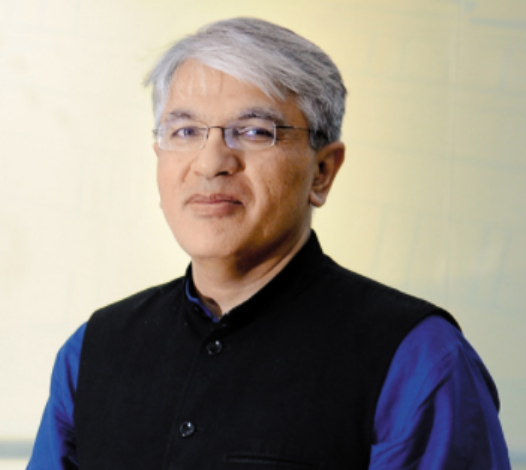Disrupting Higher Education

The future of education and jobs is unknown. That doesn’t mean we can’t prepare for it
In 1934, Nalini Ranjan Sarkar – the forgotten genius who chaired a committee in 1946 that recommended setting up IIT’s – said “There is a great need not only for a policy of action to deal with a pressing situation, but also the provision of a new conception of social and economic organizations. Unless something is done quickly, there is a limit to the sufferings that will be borne by a traditionally patient people”. Mr. Sarkar’s words apply equally to higher education in 2017; India’s youth are tired of degrees that don’t lead to jobs and employers are tired of employees that don’t have skills. India’s higher education needs urgent deregulation to create the space for innovation by new organizations because the current system is weak at delivering low costs and employability.
The mental conception of a University for most rich people is Harvard or Oxford; a big campus with big people thinking big thoughts and big selection criteria that create big signaling value. But is this 500 year conception valid for the next 50 years? And is this conception shared by non-rich parents or children who did not choose their parents wisely? Most people see higher education as a ticket to a job but the return on investment – fees paid relative to salary at graduation – for non-top-tier universities all over the world is rapidly declining (it’s no coincidence that 30% of engineering seats are empty in a year that the top 20% of ITI graduates will get more salary than the bottom 20% of engineers). This low employability is further complicated by noise around the future of work; threats from manufacturing automation, machine learning, trade protectionism and lower immigration suggest that you can’t predict where jobs will be. What should policy makers do? We suggest three steps.
The first step is policy makers accepting that the future of jobs is unknowable. The 50+ reports by various countries predicting where jobs will be in the future have the efficacy of palm reading or astrology (more than 50% of the jobs created in the US in every decade since the 1960’s did not exist in the decade before that). Universities traditionally delivered a wage premium because, a) the Gross Enrollment ratio – the percentage of kids in college – was small and thus signaling value was high; most honest alumni will agree that IIT is a good place to be at but a better place to be from, and b) Economies and companies were more stable and predictable before the advent of globalization, digitization, and automation (the average life expectancy of a Fortune 500 company has come down from 65 years to 15 years in the last 68 years). Does the future lie in jobs that are blue collar (machine facing) or pink collar (computer facing) or white collar (people facing)? Nobody knows and as change to the world of work accelerate, the job of education policy makers is not to predict the future but to make the system self-healing.
The second step is policy makers accepting that the future of university education is unknowable. Is it Physical classrooms or Online classrooms? Text or Multimedia? Degrees or Apprenticeships? Study before working or Continuing education? Or creative combinations? We recognize that our vision of a future of university education – on-the-go, always-on, on-the-job, on-site, on-demand, crowd-sourced, and gamified – will probably horrify traditional university academics. But nobody knows who is right. Unfortunately traditional academics have captured regulators with their definition of a university that confuses university buildings with building universities. India needs policy space for innovation – allowing a number of statistically independent and genetically diverse life forms in higher education – that is impossible with the current mindset of prohibited till permitted.
These two steps lead to the third; a bold policy agenda that destroys the regulatory cholesterol in the next budget. The legal context of universities must be revamped by separating the policy maker, regulator and service provider. Policy must recognize that large universities that pray to the one god of employers can co-exist with small universities that focus on research and knowledge. This means equivalence for learning delivered on-the-job, on-site, on-line, and on-campus. And involves lifting ban on online education for all Indian universities (state or central, private or public, young or old). The role of policy is not to set things on fire (decide what higher education looks like or pick winners and losers) but create the conditions for spontaneous combustion. Our regulatory cholesterol has not only hindered innovation but created an adverse selection in higher education in both the private and public sector; the hugely prescriptive, subjective, and hardware obsessed norms mean that most higher education entrepreneurs are either criminals, politicians or land sharks. And the lack of autonomy for public institutions mean that there is no fear of falling or hope or rising for teachers or leaders.
A MHRD report last week suggests huge progress in quantity; we have 35 million students in higher education in our 51,000 colleges and 864 universities. Our three-year goal should be 50 million students. But everybody must be employable and pay lower fees. This is impossible without online delivery and vocationalization.
Source: First Published in Business Standard, 19 January 2018
Latest Blogs
Manufacturing Industry Growth in India and Hiring Trends
Hiring for Manufacturing Industry in India India's manufacturing sector is on the cusp of a transformative leap, aiming to bolster its GDP contribution to 25%...
Read MoreNavigating Growth and Challenges in the Indian FMCG Sector in India
Technological Advancements and Digital Transformation: Technology is playing a pivotal role in shaping the future of the FMCG brands in India. From digital marketing and...
Read MoreWorking With a Multigenerational Workforce: Benefits and Challenges
Benefits of a multigenerational workforce Each workforce from a different generation has a unique perspective shaped by their experiences, upbringing, and cultural influences; they bring...
Read MoreGrowth of Hospitality Industry in India 2023 and Prospects for 2024
Surging Opportunities and Hiring Trends in 2024 Fueled by a surge in travel, India experienced a remarkable 50% increase in hiring for tourism and hospitality...
Read MoreTelecom Industry in India: The evolving landscape
Inventory in the Telecom Sector: In the telecom sector, inventory encompasses a range of tangible and intangible assets crucial for operations. This includes physical infrastructure...
Read More






